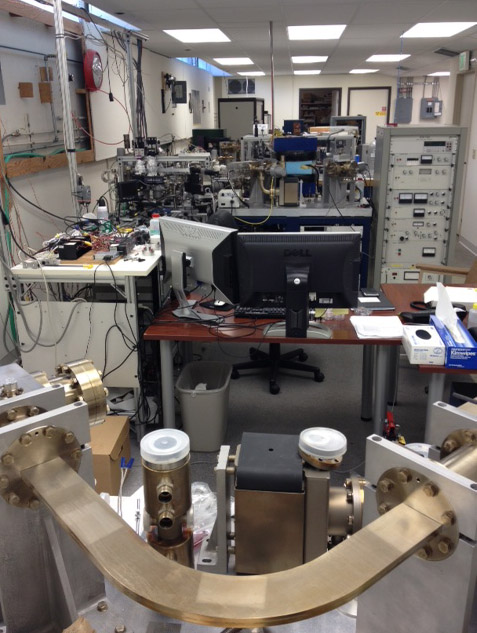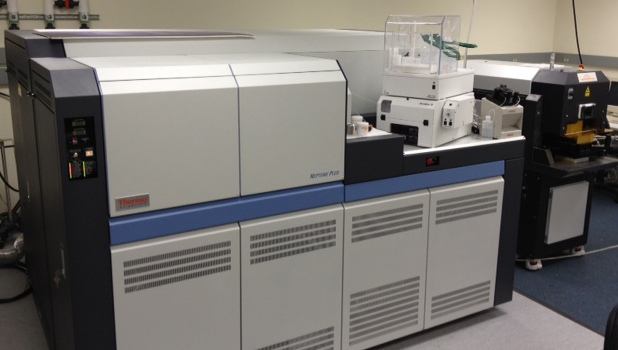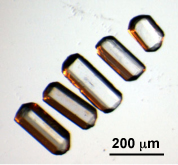Laboratory Facilities:
Noble Gas Thermochronometry Lab

Noble Gas mass spectrometers
Housed at Berkeley Geochronology Center, this facility is specifically optimized for high-precision and high-accuracy (U-Th)/He and 4He/3He thermochronometry, although the system can be used to measure all five of the noble gases. The system is composed of an automated high-vacuum extraction system, a cryogenic noble gas purification system, set of calibrated pipettes, a gas-source quadrupole mass spectrometer (QMS) for measuring NG abundances using isotope dilution, and a noble gas MAP-215 sector field mass spectrometer with ion counting electronics. A variety of feedback-controlled laser heating systems can be used to accurately measure temperatures during stepwise thermal extraction of noble gases from minerals and glasses over a wide range of temperatures. Complete system automation and instrument communications is achieved using software written in LabView. The design of our laser heating systems is such that they can be used with other systems optimized for cosmogenic 21Ne measurements or 40Ar/39Ar thermochromometry (see below). This lab was funded by NSF-EAR and Berkeley Geochronology Center.
Cosmogenic 21Ne and 3He Lab
Housed at Berkeley Geochronology Center, this facility is specifically optimized for observations of cosmogenic 21Ne and 3He, although the system can be used to measure all five of the noble gases. The system is composed of an automated high-vacuum extraction system, a cryogenic noble gas purification system, set of calibrated pipettes, and a noble gas MAP-215 sector field mass spectrometer with ion counting electronics. This lab was funded by NSF-EAR and Berkeley Geochronology Center.
Wet Chemistry Labs
Geochemistry wet labs are housed in both McCone Hall on the UC Berkeley Campus and in the Berkeley Geochronology Center. This includes three separate laboratories with a total of four fume hoods and ancillary equipment. They primarily support: i) mineral separation and cleaning by acid etching and selective dissolution, ii) measurement of U and Th concentrations in a variety of minerals by acid digestion and ICPMS isotope dilution (see below), and iii) extraction and purification of trace cosmic-ray-produced nuclides, primarily 10Be and 26Al in quartz, for AMS measurement.
40Ar/39Ar Thermochronometry

Sample chamber and optics for pyrometer-controlled diode laser heating
Berkeley Geochronology Center houses three automated extraction and mass spectrometry systems that are optimized for 40Ar/39Ar geochronology. Each system can interface with the feedback-controlled laser heating systems discussed above, such that temperatures of thermal extractions can be measured to quantify the kinetics of Ar diffusion during analysis.
We use this method primarily to analyze lunar samples and meteorites to identify time and thermal constraints that are relevant for interpreting paleomagnetic observations made on the same samples at the MIT Paleomagnetism Lab. However, this basic approach also has broad utility for addressing geological questions here on Earth.
LA ICPMS Lab

Neptune Plus ICPMS
Housed at the Berkeley Geochronology Center, this facility consists of a Thermo Fisher Scientific Neptune Plus multi-collector ICPMS, with nine Faraday detectors with computer-switched 1011 and 1012 ohm input resistors, discrete dynode electron multiplier with ion counting and high abundance sensitivity ion energy filter, and high performance sample and skimmer cones. The lab also includes a Photon Machines 193 nm excimer laser ablation system capable of ultra-short pulse, with video microscope, separate CCD sample map camera, with transmitted, reflected, and ring lighting, cross polarizers, automated XY motion controller. We use this lab to measure U, Th and Sm concentrations by isotope dilution and U and Th spatial distributions within mounted and polished apatite crystals by laser ablation ICPMS. This lab is also used by Warren Sharp for U-series disequilibrium applications. This lab was funded by an NSF-EAR grant to Sharp and Shuster, and the Ann and Gordon Getty Foundation.
Mineral Characterization Labs

Five apatite crystals
The laboratory consists of calibrated binocular microscopes and camera systems for preparing and measuring the geometry of samples.